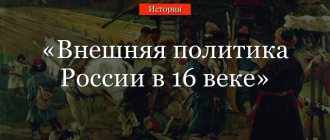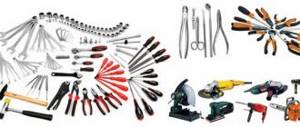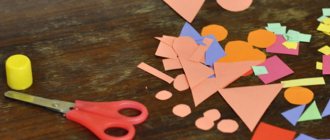Trade in the Middle Ages
In Medieval Europe, subsistence farming was maintained.
The bulk of goods were produced on the estate. They bought only what was not available or in short supply in the area.
But the population of Europe grew, and so did its needs.
The desire to buy rare goods forced the feudal lords to transfer peasants to cash rent. The growth of cities contributed to the development of crafts.
Commodity farming gradually developed
,
in which products were produced for sale on the market or exchanged.
Barter trade was replaced by
monetary relations
. People increasingly began to engage in business for profit.
Market
Despite all the benefits, trade in the Middle Ages was a dangerous and difficult activity. There were no roads in the modern sense of the word.
They were narrow paths among dense forests and swamps.
Attacks by robbers were constant. The feudal lords collected taxes for travel through their lands, for the use of bridges and crossings, and quite often they themselves robbed merchants.
In order to protect their interests, help each other, and protect themselves from robbers, merchants began to unite in guilds
–
trade unions with their own charters and rules
.
Merchants
This greatly facilitated overland trade. But it was easier to deliver goods by water. Therefore, the large rivers of Europe, such as the Rhine
,
Elbe
,
Loire
,
Dniester
,
Danube,
became the most important trade arteries.
River trade routes
Cities along their course became centers of trade not only with the surrounding area, but also with other cities, individual lands, and other countries.
European maritime trade took place in three main directions. Through the North Sea - with England, Scandinavia, German cities. Baltic - with the Baltic states, lands of Rus'. Mediterranean - with the countries of the East.
Maritime trade routes
Trade in the Baltic and North Sea was controlled by the Hansa
.
In the 13th century, more than 70 German cities established
the Hanseatic League
(Hansa), a trade association to protect common interests and trade routes.
The Hansa quickly came to dominate trade on the Baltic Sea.
Hanseatic merchants exchanged goods from Western Europe (fabrics, luxury goods, spices) for raw materials from Eastern Europe (furs, leather, honey, wood, resin), receiving huge profits.
Trade in the Baltic
By the 14th century, the Hanseatic League controlled trade between England, Scandinavia and Russia.
Its factories are
trading
yards -
were located in many large European cities:
Bruges, Bergen, London, Stockholm, Copenhagen, Novgorod
.
Hanse factories
The Mediterranean was dominated by merchants from Italian cities.
-
Venice
and
Genoa
. They controlled almost all trade between Europe, Asia and Africa.
Spices, silk, coffee, caviar, and luxury goods were brought from the East. In return they gave silver, timber, slaves, wool, and iron.
Eastern trade
They founded many trading posts and colonies.
On the coast of the Black and Azov Seas, in Crimea: Kaffa, Sarsona, Tana, Trabzon.
In the Mediterranean: Dubrovnik, Split, Cyprus, Corfu
.
The trading yards of Italian merchants were located in Constantinople, Beirut, Alexandria
.
Factories of Venice and Genoa
Overland trade between European countries gradually revived.
The military and administrative needs of the state required the improvement of roads, the construction of bridges and crossings. inns were created for travelers
. States tried to monitor the safety of their routes of communication.
The Mongol conquests of the 13th century significantly facilitated trade with the East
. Now European merchants could freely move and trade across the vast Mongol Empire from the lands of Rus' to China.
Medieval road
Middle Ages
–
heyday of fair trade
.
Large trades were held at the fairs; merchants from different cities and countries came here.
There was a preferential treatment for all participants. It was only necessary to pay a fee to the owners of the lands where the fairs
.
In the 12th–13th centuries, the most popular fairs in Europe were in the province of Champagne
. Trading took place here almost all year. Then they were replaced by fairs in Bruges and Antwerp, Geneva, Lyon, Leipzig.
Major fairs in Europe
The fair was one of the most important events in medieval society
. In addition to earning money, the visitors exchanged news. The fair was an entertainment center. There were traveling artists, fortune tellers, and musicians present here.
At fairs, merchants sought to sell their goods for money. In most states of Medieval Europe, money was silver
.
But each country, as well as duchy, county, and principality, minted its own coins. They differed in weight and cost.
European coins
This created confusion during trade calculations. To eliminate confusion, a special profession of money specialists was created
–
changed
.
They also lent money at interest. Gradually the money changers became moneylenders, and then
-
bankers
. In Europe, banks spread by the 14th–15th centuries.
Banker
The first of them appeared in Northern Italy (Lombardy region) - this is where the word
“pawnshop” .
Bankers took money for safekeeping. We were engaged in exchanging them, transferring them from one country to another. They issued loans, often to kings and feudal lords.
Great wealth accumulated in the hands of merchants and bankers. Thanks to money, they acquired significant influence. For the sake of their interests, they supported certain rulers, sponsored military campaigns, and influenced the adoption of laws.
Bankers
The main (“immovable”) property of the Middle Ages was land.
But money and goods are beginning to become increasingly important -
"movable property"
, the commodity-money economy came to replace the natural one.
. With his arrival, the feudal structure and worldview of people changed.
Let's summarize.
During the period from the 11th to the 15th centuries, trade acquired an important status.
Connections between regions and countries have strengthened.
Banking developed, and with it commodity-money relations.
The World History
What contributed to the widespread development of trade in the Arab Caliphate and the Byzantine Empire?
What troubles did feudal fragmentation bring to the population of European countries?
1. “Whatever fell from the cart was lost.” Trade in the Middle Ages was profitable, but very difficult and dangerous. The space between the settlements was occupied by huge, impenetrable forests, infested with predators and robbers. The roads were narrow and unpaved, covered with impassable mud. A good road was considered to be the one along which, as they said then, “a bride could drive without hitting the cart with the deceased.” Goods that fell to the ground or were washed away from a ship were considered the spoils of the owner of that land. As they said: “Whatever falls from the cart is lost.”
To travel through the domains of feudal lords and to use bridges and crossings, tolls had to be paid many times. And feudal lords sometimes built bridges on dry places and demanded payment for the dust raised by the merchants' carts.
To protect themselves from robbers and help each other, merchants united in trade unions - guilds (from the German word "gille" - feast). At meetings, guild members elected leaders, hired guards, and helped each other from the common treasury (for example, victims at sea, their families). Members of the guild formed partnerships among themselves, where they became partners to carry out one or more trade transactions.
Merchants' carts
Horn
2. Expansion of trade relations. The city was a center of trade exchange not only with the surrounding area, but also with other cities, individual lands, and other countries.
Subsistence farming continued in Europe. But a commodity economy gradually developed, in which products were produced for sale on the market and exchanged, including through money.
The revival of trade required improved roads. This was also required by the military and administrative needs of the state. In some countries, kings ordered the main roads to be paved with stone. Strong bridges were built across rivers. Heavy loads were no longer carried on the backs of horses, but in carts. It was cheaper and more convenient to transport goods along rivers and seas. Improvements in sails allowed ships to move in crosswinds and even headwinds.
Merchants from the Italian cities of Venice and Genoa took advantage of profitable trade routes to the East (to the ports of Syria and Egypt, Crimea and the Caucasus). These cities competed and fought with Byzantium and each other for centuries. Venice and Genoa were independent city-republics, in which power belonged to wealthy merchants who owned flotillas of ships, dozens of houses, warehouses and shops. In the East, merchants acquired lucrative luxury goods and spices for wealthy Europeans. Spices were weighed on apothecary scales and sold in small portions. It was not for nothing that in the Middle Ages a very rich man was mockingly called a “bag of pepper.”
Venetian galley
Hanseatic ship
City Gate in Lübeck, which headed the northern branch of the Hanse
Important trade routes passed through the North and Baltic seas - to Eastern Europe. Other goods predominated here: salt, furs, wool, wax, timber, iron. Merchants of cities and countries of Northern Europe were engaged in this trade - from Novgorod in Rus' to London. The center of northern trade was the city of Bruges with its huge international fair.
In the 14th century, merchants from more than 70 German cities united in the Hansa (“union”, “partnership”) to protect their property and oust their rivals. The Hansa had branches in other countries.
In Novgorod, Bruges, London, Bergen and other cities, Hanseatic merchants had well-fortified trading yards - trading posts. In such a courtyard, residential and office premises, barns, warehouses, and a church were built. Having a large fleet, the Hansa often achieved favorable terms of trade in neighboring countries by force of arms and fought pirates. Until the end of the 15th century, the Hansa with its powerful united fleet (up to 1000 ships) virtually dominated the Baltic trading region, both economically and politically.
3. Fairs and banks. The busiest places of trade in Europe were fairs, in which hundreds of large merchants from different countries took part.
Until the end of the 13th century, the most famous fairs were in the county of Champagne in northeastern France. They continued almost all year round. Then they were replaced by a fair in Bruges. At international fairs they traded goods from all over Europe and the East.
At the fair. Miniature from the 14th century.
Development of crafts and trade in Europe in the 14th century.
In which medieval states were there especially many cities and fairs? Guess why. Find the locations of the most famous fairs named in the text of the textbook. What trading cities competed on the Mediterranean? Count how many cities were part of the Hansa. What explains their union?
Development of crafts and trade in Europe in the 14th century.
In which medieval states were there especially many cities and fairs? Guess why. Find the locations of the most famous fairs named in the text of the textbook. What trading cities competed on the Mediterranean? Count how many cities were part of the Hansa. What explains their union?
Purchasing goods from a merchant. Miniature of the 15th century.
The fairs were noisy and crowded. Near the merchants' shops there were tables of money changers. They were engaged in the exchange of money: after all, in every country there were coins of different weights and mintage. Money changers also lent money at high interest rates. This is how money changers became moneylenders (their money seemed to “grow”).
Already in the 14th and 15th centuries, the first owners of banks emerged from money changers and moneylenders1. Bankers took money for safekeeping and transferred money to merchants from one country to another. Great wealth accumulated in the hands of merchants and bankers. They often lent large sums to kings and feudal lords. The very first banks arose in Northern Italy, in Lombardy (where the word “pawnshop” comes from).
Now, along with the main property of the Middle Ages - immovable (land and buildings on it), movable property created in cities (money, goods, ships, etc.) begins to acquire increasing importance. Gradually but steadily, money contributed to the extinction of the subsistence economy, and along with it changed the way of life and the motives of people’s behavior.
1. Why did the growth of cities lead to the expansion of trade? 2. What were the difficulties and dangers of a merchant’s activity in the Middle Ages? 3. Which cities controlled the main trade routes in Europe and connections with the East? What was their relationship like with each other? Use the map to answer. 4. Tell us about the role of the Hansa in European trade. 5. How and why were fairs organized? Which ones were the most famous? 6. What did money changers, moneylenders, and bankers do? Why did these urban professions arise?
1 Bank (from the Italian word “bank” - bench, office table) - storage of large sums of money.
1. What hindered the development of trade in medieval Europe, and what contributed to it? 2. Imagine that you are a medieval merchant. Tell us about your activities. What joys and difficulties do you most notice in it? Explain how you feel about your work and why that is. Argue on behalf of the merchant with the churchmen who claimed that “the merchant’s craft is displeasing to God.” 3. Why did medieval merchants, like artisans, peasants and feudal lords, create their own associations? 4. What character qualities should a medieval merchant have to be successful in his business? Do you think people in business need them these days? 5. The Church condemned moneylenders. She said that moneylenders trade in what belongs only to God - time. Explain this idea. 6. The modern word “bankrupt” comes from the Italian “banca rotta,” meaning “broken bench.” Do your research: use a dictionary to check the meaning of the words “bankrupt” and “bankruptcy” and guess how they happened.
- Previous
- Table of contents
- Next







